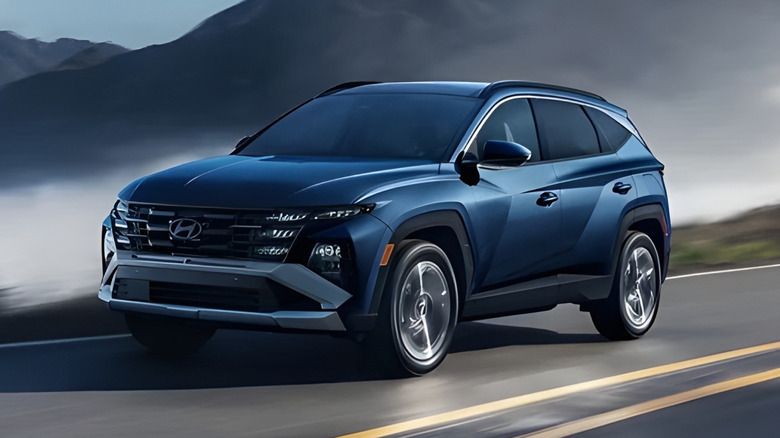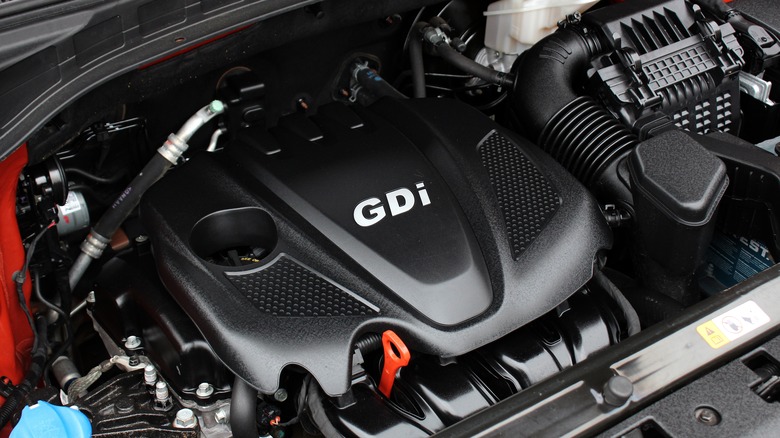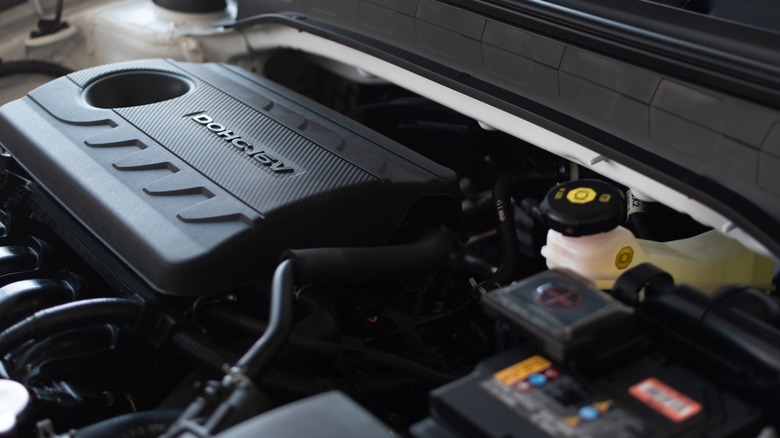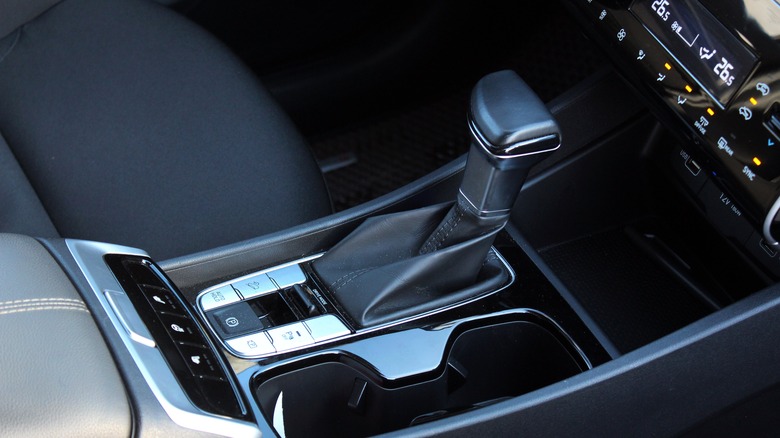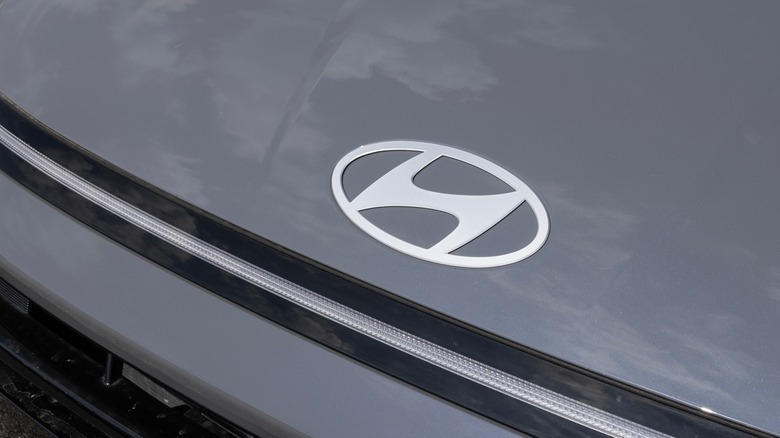Are Hyundais Reliable After 100k Miles? Here's What Owners Say
There's a long-running belief in used car circles that Hyundais don't hold up past six figures. If anything's going to go wrong, this is when it starts. Conveniently, that's also when Hyundai's original engine warranty ends, and after that, Hyundai's reliability has been called into question more than once. To Hyundai's credit, not every engine fell into that category. A handful of troubled engines set the tone for an entire lineup, and Hyundai has been trying to dig out of that hole ever since.
Hyundai's reputation took a big hit when its Theta II four-cylinder engines — used in millions of Sonatas, Santa Fes, and Tucsons — which developed a history of failing just after that warranty expires. Hyundai has faced recalls and class-action lawsuits tied to premature wear, oil starvation, and bearing failure. A separate issue cropped up in certain Nu 2.0-liter engines (used in the newer Elantra, Kona, and Veloster), where bad piston rings triggered oil consumption and cylinder scuffing. Those models are just now aging past 100k.
But it's not all bad news. Hyundai has issued software updates, extended warranties, and even free engine replacements. More importantly, not every model fits the troubled narrative in the first place. Plenty of Hyundais have proven themselves as dependable long-haul machines, with owners reporting well over 300,000 miles on the original drivetrain. The difference between the cars that keep going and the ones that don't usually comes down to the powertrain, whether recall work was completed, and how well the car was maintained between 60,000 and 100,000 miles.
Theta II engines failed after 100k but later cars hold up better
If there's one part of a high-mileage Hyundai that raises the most concern — and has triggered a federal lawsuit — it's the engine. The worst cases involve the Theta II four-cylinders, used in millions of Sonatas, Santa Fes, and Tucsons built from 2011 to 2019. These 2.0-liter and 2.4-liter GDI engines had machining debris left inside the block during production, which restricted oil flow and led to premature rod-bearing wear. The typical signs show up between 90,000 and 130,000 miles: knocking, stalling, and in extreme cases, engine fires.
Hyundai was slow to act, and the delays cost them. In 2020, the NHTSA issued a consent order against the company for dragging its feet on issuing recalls. That ultimately helped trigger what became one of the biggest engine recalls in U.S. history, covering over a million vehicles across the Hyundai-Kia umbrella. Hyundai eventually rolled out the Knock Sensor Detection System (KSDS) — a software update that monitors for early signs of bearing wear — and tied it to extended engine coverage.
For many models, that means up to 15 years or 150,000 miles of warranty. If the software is installed and a dealer confirms bearing damage, the engine may be replaced under that coverage — even well past the original powertrain warranty. Hyundais with KSDS and the extended engine warranty in place carry stronger post-100k protection than before. Late-model Sonatas and Tucsons that received the fix are aging surprisingly well, with owners on r/Hyundai reporting high mileage without repeat failures.
Hyundai's overlooked Nu 2.0 engine is still catching Hyundai owners after 100k
While the Theta II engines dominate Hyundai's recall history, the Nu 2.0-liter MPI engine has quietly developed one of the company's most deceptive long-term reliability problems — and it's only now catching up with owners past 100,000 miles. Found in many 2019-2021 Elantra, Kona, and Veloster models, this engine was recalled for defective oil-control rings that weren't properly heat-treated at the factory. The issue gradually leads to excessive oil consumption, and if left unchecked, the engine can run low on oil, wear down the cylinder walls, and eventually suffer a complete failure.
What makes this so difficult to catch is that the damage builds slowly — often surfacing around the 100,000-mile mark — right when many owners stop checking oil levels between changes. Early signs are subtle because the engine burns oil internally – there's no external leak and no warning light for consumption — so levels can drop rapidly between changes. By the time the low oil-pressure light illuminates, damage to the cylinders and bearings is usually already done.
Hyundai's Recall 21V-301 offers inspections and, in severe cases, full engine replacements. Some models also received the Piston Ring Noise Sensing System (PNSS) update, which uses vibration patterns to detect early signs of ring scuffing. But rollout has been inconsistent across VINs, and unlike the Theta II campaign, Hyundai hasn't offered any extended warranty beyond the basic recall — leaving owners far more exposed if the problem surfaces late.
Hyundai's dual‑clutch transmissions show their weakness after 100,000 miles
Hyundai's dual-clutch transmissions (DCTs) also start showing their age. The seven-speed dry-clutch DCT, found in cars like the 2015-2019 Sonata and 1.6T Tucson, uses two computer-controlled clutches instead of a traditional torque converter. It shifts quickly, but it's not great at crawling through traffic. As these units go past 100,000k miles, they often develop jerky starts and hesitation, especially under light throttle. The root cause is usually clutch pack wear or faulty shift logic.
More recently, Hyundai's newer eight-speed wet-clutch DCT has faced its own wave of issues. Found in Santa Fe, Sonata N Line, and other performance trims, it was the subject of Recall 236 (22V-746) and Recall 263 due to a critical oil-pump logic fault. In the affected 2021-2022 Santa Fe and Santa Cruz models, owners reported sudden loss of power at highway speeds or when starting from a stop, with flashing warning lights and total drivetrain shutdown. In some cases, vehicles could not accelerate, were stranded in active lanes, or coasted to a stop with no input — an extremely dangerous failure mode if traffic is heavy.
In a significant course correction, Hyundai has discontinued the dual-clutch transmission entirely for the 2026 Santa Fe, reverting to a conventional torque-converter automatic. It is also worth noting that not every Hyundai with a DCT is doomed. Owners of older six-speed automatics and traditional torque-converter setups — particularly in Tucson and Santa Fe models — frequently report sailing past 200,000 miles without a single major transmission repair.
Methodology
Every automaker has its bad years, but what separates a bad year from a bad brand is how often those failures show up — and how the company responds. Hyundai is no different, and that's why we didn't look at just one model or one issue. We focused on four core models — the 2011-2022 Sonata, Elantra, Tucson, and Santa Fe — because they account for the majority of Hyundai's U.S. market and generate the most long-term complaints.
But even within a single model year, the problems don't always overlap. A 2016 Tucson with a dual-clutch transmission problem doesn't necessarily share parts with a 2016 Sonata that suffered Theta engine failure. Root causes, recalls, and remedies are entirely different for each failure, even though symptoms like limp mode or stalling can look the same from behind the wheel. Understanding that is key when looking at 100k+ reliability.
